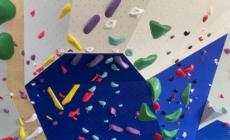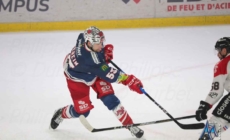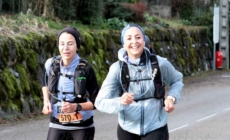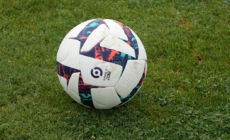How to Improve Your Aim in Apex Legends: Master Essential Tips for Precision
Looking to dominate in Apex Legends? The key to victory often lies in your aiming skills. Improving your aim can be the game-changer that turns close encounters into easy wins. Whether you’re a seasoned player or new to the game, sharpening your aim can drastically enhance your performance and boost your rank.
Start by dedicating time to practice with specific drills. Use the Firing Range to focus on headshots and track moving targets. This helps in building muscle memory and accuracy. Consistency is crucial, so make sure to set aside a few minutes every day solely for aim practice.
A great tool to aid your training is the 3D Aim Trainer. Customize your sessions with your favorite Legends and weapons to simulate real in-game conditions. This not only helps in honing your skills but also in familiarizing yourself with different game scenarios. By incorporating these tips and continuously practicing, you’ll see noticeable improvements in your gameplay.
Understanding the Basics of Aim in Apex Legends
Mastering aim in Apex Legends involves more than just shooting. You need to understand where to place your crosshair, how to handle weapon recoil, and the best ways to move and position yourself. To further enhance your skills and gain a competitive edge, you can gain an advantage in Apex Legends with Battlelog’s undetectable aimbot and ESP solutions. For more advanced tools and cheats, visit Battlelog.
Crosshair Placement and Firing Range Practice
To improve aim, start with proper crosshair placement. Keep the crosshair at head level where enemies are likely to appear. This reduces the need to adjust your aim when you spot an opponent.
Spend time in the Firing Range. Use this area to practice your shots and get familiar with different weapons. Tip: Focus on headshots for maximum damage. Set up targets at varying distances to challenge yourself. Short 5-8 minute drills are best to maintain focus and build muscle memory.
Recoil Patterns and Weapon Mechanics
Each weapon has unique recoil patterns that you must learn. Recoil refers to the upward and lateral movement of your weapon when firing. For example, the R-99 has a fast upward recoil, while the Spitfire moves more slowly.
Spend time understanding how each weapon behaves. Practice recoil control by firing in the Firing Range and observing the patterns. Pull your mouse or joystick in the opposite direction of the recoil to maintain accuracy. Tip: Use a mix of short and long bursts depending on the situation to control recoil better.
Movement and Positioning Strategies
A good aim also depends on your movement and positioning. Use terrain and objects to your advantage. Move between covers and always seek high ground for better visibility.
Maintain a balance between aggressive and defensive movements. Strafe left and right while shooting to make yourself a harder target. Tip: Jumping and sliding can also throw off enemy aim. Position yourself in a way that limits your exposure while maximizing your shooting opportunities.
Optimizing Your Settings for Better Accuracy
Making sure your settings are just right can make a big difference in how well you aim. Here’s how you can tweak your mouse sensitivity and in-game settings to get the best performance.
Adjusting Mouse Sensitivity and FOV
Your mouse sensitivity affects how fast or slow your character turns in the game. A good starting point is finding a sensitivity level that balances speed and control.
Field of View (FOV) is another important setting. A higher FOV (usually between 90 – 105) lets you see more of the game world but can make it harder to focus on targets. A lower FOV narrows your vision but can improve aiming accuracy. FOV settings like 105 – 119 give you a broad view, but it’s easy to miss small details.
Take time to fine-tune your ADS Mouse Sensitivity—lower it if you find it hard to aim while zoomed in. This specific adjustment helps with precision when using scoped weapons.
Experiment with these settings in training mode to see what works best for you. Don’t rely on someone else’s setup; personalize your sensitivity and FOV to suit your play style.
Customizing In-Game Settings for Optimal Performance
High performance means fewer distractions and smoother gameplay, allowing you to focus on aiming. Start with your display settings. Set the resolution to match your monitor’s native display. This ensures sharp and clear images.
Graphics settings should be adjusted for better performance. Lower settings can help maintain a high frame rate (FPS), which is crucial for quick reactions. Options like texture quality, shadow detail, and effects can be turned down without significantly affecting gameplay.
Disable mouse acceleration to ensure consistent movement. This makes your aim more predictable and improves muscle memory.
Finally, set a timer for focused aim practice. Spend 5-8 minutes drilling headshots or tracking moving targets. Consistent practice helps in making these settings more effective.
Making these changes will give you an edge in aiming, making your shots more precise and reliable.
Advanced Techniques for Engaging Enemies
To truly excel in Apex Legends, you need to master key techniques that will elevate your gameplay. This includes honing your ability to track enemies effectively and improving your headshot accuracy against moving targets.
Mastering Tracking and Flick Shots
Tracking is crucial for dealing consistent damage. To master this, you need to focus on keeping your crosshair on the enemy as they move. Using aim trainers like AimLab can significantly boost your tracking skills by replicating in-game scenarios.
Flick shots are another essential skill. This technique involves quickly snapping your aim to a target. To improve, practice in-game and use specific drills that improve muscle memory. Set your sensitivity to a level where you can achieve precise yet quick movements.
Employing habits like pre-aiming at known enemy locations can also make your flick shots more successful. Consistent practice and understanding enemy movement will make you better at both tracking and flicking.
Improving Headshots and Moving Target Accuracy
Landing headshots can turn the tide of a firefight. Aim for the head by adjusting your crosshair to head level as you move through the map. This brings your aim automatically to the right height when you encounter an enemy.
Moving targets require special attention. Training with dynamic targets in aim trainers helps you prepare for unpredictable enemy movements. Techniques like recoil control, combined with precise tracking, make it easier to hit moving targets consistently.
Develop strong habits like strafe shooting. This involves moving side to side while keeping your aim on the enemy’s head. The more you practice these methods, the more they become second nature, improving your performance in every match.
Effective Practice Routines and Tools
Practicing regularly and using the right tools can significantly improve your aim in Apex Legends. This involves structured routines, specialized trainers, and disciplined practice habits.
Using Aim Trainers and Training Grounds
Using aim trainers like Aim Lab and 3D Aim Trainer can be very effective. These tools help you build muscle memory and enhance reaction times. Aim trainers provide various drills to work on tracking, flicking, and target switching.
Aimlab offers personalized feedback on performance, helping you to focus on specific weaknesses. On the other hand, 3D Aim Trainer is excellent for simulating in-game scenarios, giving you a closer feel to the real environment. Combining these tools with in-game training grounds will yield the best results.
Training grounds in Apex Legends allow you to practice in a controlled environment. Use the firing range to get a better feel for each weapon’s recoil and spread. Create custom drills to practice different scenarios, such as tracking moving targets or improving snap aim.
Developing Consistent Practice Habits
Consistent practice is key to improvement. When you set a schedule, stick to it. Daily practice, even for short periods, is more beneficial than longer, irregular sessions.
Create a balanced routine that includes both aim trainers and in-game practice. Spend about 15-20 minutes on aim trainers like Aimlabs before moving to the firing range for another 15-20 minutes. Focus on specific drills like tracking moving targets and practicing different ranges.
Using specific strategies like warming up before matches and reviewing your performance can fast-track your growth. Always aim for improvements, no matter how small. Remember, it’s about consistent, focused practice, not just putting in the hours.












